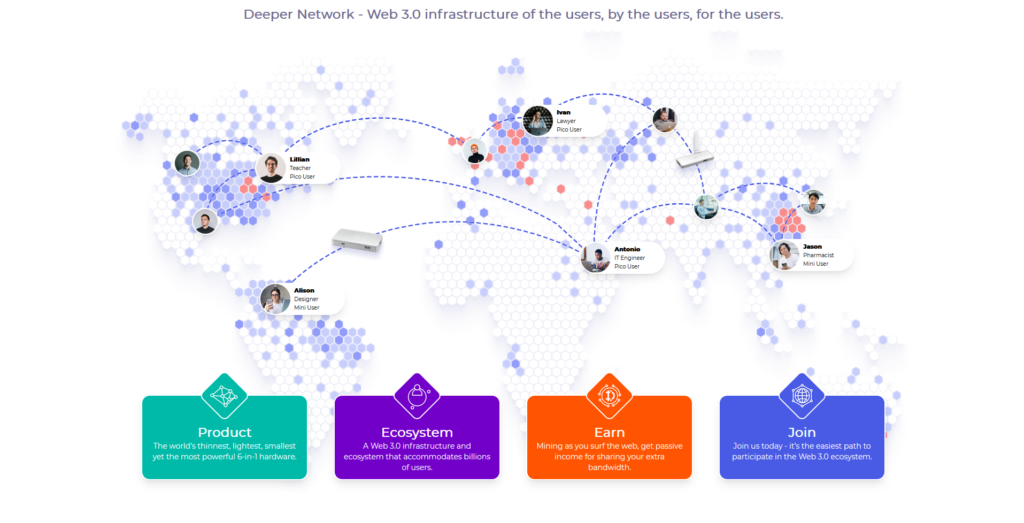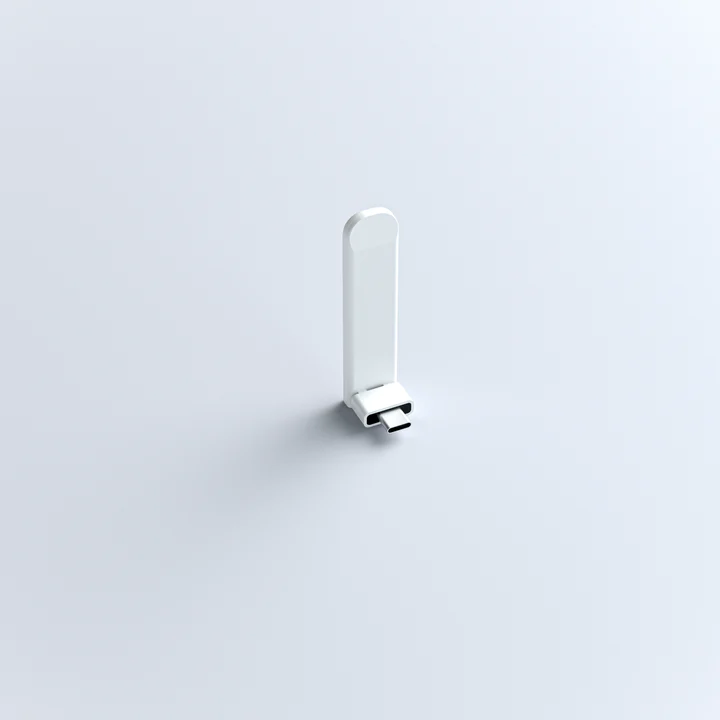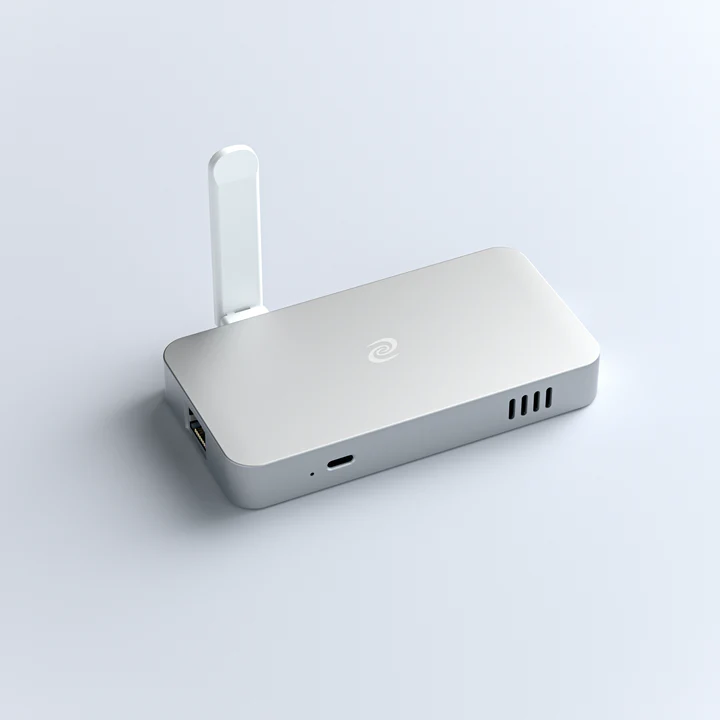A Web3 network based on specialized, energy-efficient devices (Proof-of-Space) running a network-sharing protocol built for distributed applications and bandwidth sharing, the Deeper Network warrants a closer look at its many capabilities. Here’s an interview with Deeper Network’s Chief Evangelist Eric Ma, former CoinMarketCap core member, where we discuss all things basic, and some deeper.
Who?
Eric Ma—Chief Evangelist, Deeper Network

#1. What Deeper Network is doing is truly revolutionary and will change how we use the internet and consume content on it. First of all, thanks for striving to make the internet safer, fairer, and more private. Now, how would you explain what the Deeper Network does to the layman?
Deeper Network’s ultimate goal is to make the internet a safer, fairer and more private place for everyone. Deeper Network offers users hardware network security which protects their entire home network with its built-in seven layer enterprise class firewall. Included are other useful told such as ad blocking and parental control. The device also offers users an uncensorable DPN (Decentralized Private Network) which acts as both a client and a server. Each node (client/server) on the network shares its unused bandwidth with other nodes on the network. This takes a central server out of the equation and makes the network decentralized. Lastly, with its Web3 infrastructure constantly in development, users are able to take advantage of Web3 services directly through the device. This includes dApps, mining and the ability to offer services to others on the network.
#2. Deeper Network is a pioneering tech that claims to pave the way for Web 3.0. Can you tell me what are the challenges facing the materialization of that dream?
The biggest challenge in building a Web3 is to create an ecosystem which doesn’t yet exist anywhere in the world. Building services and opening the network to 3rd party developers and developing tools that people don’t even know they need yet is a major challenge. A speculative community, many of whom are there only for short term gains, can be a challenge in garnering support especially during bear markets.
#3. A DPN node is both a client and a server while being able to earn mining rewards for participating or contributing to their internet bandwidth. Can you explain how does this work? How can one start to participate in making the world better while earning rewards?
First, you would purchase a Deeper device and set it up. Sharing your bandwidth to the network would allow you to get incentivized for doing so. If you would like to earn higher rewards, you would need to stake DPR on the Deeperchain. Once your device is added to the network you can choose from a variety of options on how you can share your unused bandwidth with other nodes on the network. If another node randomly connects to your node and starts to use your bandwidth, you will be rewarded in DPR. There is a minimum amount of bandwidth that you need to share per day, and if you reach that number you receive a credit point. The more credit points you get the higher your credit score will be, in return the higher your credit score is the more rewards you can receive.
#4. Will the Deeper Connect device be able to mine Helium ($HNT) as that relies on coverage whereas the Connect mines using internet bandwidth?
Technically it is possible to add additional hardware to the Deeper device to mine HNT as we have proved Our tech is capable of having others build on top of it. However, our goal is to build the Deeper Network and be a leader in the global adoption of Web3, a project that provides enterprise grade cybersecurity and gives ownership back to where it belongs, the people.
#5. The Deeper Connect comes in various sizes like Lite, Mini, Nano, and Pico. If there’s someone who’s new to all this, how would you explain their applications individually so they might be able to pick the one that will be best for them?
The Deeper Connect Mini and DPR MINI SE are designed for home or business use. The Mini has a maximum bandwidth of 1 Gbps and the Mini SE’s max bandwidth is 500 Mbps. The Deeper Connect Pico was designed for frequent travelers who would like to protect themselves while using “public” WiFi and fight censorship when traveling to heavily censored countries. The maximum bandwidth for the Pico is 100 Mbps. The lite and Nano have both been discontinued. We have 3 new devices hitting the markets over the next coming years. Deeper Connect Air, Pro and EarthLink, all groundbreaking devices which will make users into owners and let them offer cloud storage services and WiFi hotspot services to others.




#6. As operating a node is effectively renting out your bandwidth, are there any concerns for the users operating these nodes? For example, how is security ensured from dangerous connections – or how can users protect themselves from bad actors trying to misuse said internet bandwidth?
Deeper Network has implemented a variety of measures to ensure the safety and security of the users. There are rules that prevent dangerous sites to be accessed and the user has the option to add their own list of domains (Blacklist) they want to block. Each connection that is created generates a LOG that is stored in the device itself, not accessible by Deeper Network where each connection is registered. This log can be used to prove want wrong-doings while protecting all users on the network via masked IPs. Users also have the option not to share any bandwidth if they choose to do so.
#7. What can users expect out of the dive into the Polkadot ecosystem?
Being a part of the Polkadot ecosystem allows for greater security, interoperability, and performance. It also allows Deeper Network to adopt successes in the Polkadot ecosystem such as its governance system, new developments, and partnerships.
… our devices use less per than an average lightbulb … thousands of times more energy efficient than Bitcoin and the majority of any mining in existence.
#8. Mining on the Deeper Network is surely much more power-efficient than ASIC mining or even GPU mining, and I read in the whitepaper that there are plans in place to further reduce the power consumption by going for ARM32 processors, that would also cost much less, but with global adoption, do you think mining on the Deeper Network will become a power issue? Let’s say when we have double the number of nodes as there are currently.
Absolutely no issues since our devices use less per than an average lightbulb. Deeper Network prides itself in not creating power consumption issues. With the new consensus algorithm out, Next-generation Proof of Work (NPoW), using our devices is thousands of times more energy efficient than Bitcoin and the majority of any mining in existence.
AtomOS is the world’s first lock-free network OS [with] a 7 layer firewall, anti-tracking, intrusion prevention and more.
#9. Theoretically, Deeper’s mining devices are the most secure mining rigs because of the inherent network security qualities. Can you tell us more about this? What are these security qualities that make them better than other, conventional types of mining rigs?
Deeper Networks operating system “AtomOS”, is the world’s first lock-free network OS. It provides a 7 layer firewall with deep packet inspection, anti-tracking, intrusion prevention and more. Features such as these are usually only found in enterprise-class cybersecurity products which cost the consumer many times more than the Deeper Connect devices. Hardware security devices provide much better security than software security solutions. The security Deeper Connect devices provide users protection for their entire home network. Anything connected to the network, computers, smart TVs, IoT devices, smart appliances, mobile phones, etc are not only protected but also enjoy VPN access along with Web3 benefits.
#10. Tell us about Proof of Credit and how it closes the loop between the 2-layered Deeper blockchain.
Proof of Credit (PoCr) is the first consensus algorithm we developed to help incentivize users on the Deeper Chain. It uses the communication of lite nodes (deeper connect devices) and validator nodes between layer 1 & layer 2 to verify all transactions on the chain. Next-gen Proof of Work (NPoW) will further close the loop on an economic level, tying it in with retail services and service seekers.
#11. You have plans to provide grants to developers who are willing to create tools and features that would further improve or secure the network. Given that the community will ideally decide how to spend the treasury pool’s DPR in the future, where are we with it right now?
New council architecture was just recently upgraded and launched. The council will be able to decide how the Treasury will be used. This could include rewards and grants. Currently, with our Decentralized Edge-Computing Platform (DEP), developers are able to develop their own dApps and be incentivized by users of those dApps. If they build a useful and popular dApp, the developers will be rewarded in return. All of the above mentioned have been launched recently and available to the public!
Token burns will continue to fight inflation. Halvings will also occur. But the most important and beneficial to the ecosystem is the real use case utility of DPR
#12. In 10 years, only 2.24% of the DPR token would’ve been created. The remaining 2.6 billion tokens from the block rewards – what are the plans for those, seeing how the DPR increase year-on-year will continually decrease?
Token burns have and will continue to fight inflation. Halvings will also occur. But the most important and beneficial to the ecosystem is the real use case utility of DPR which will burn and mint DPR. Early adopters are currently being rewarded handsomely. Like with any project, these rewards will decrease over time.
#13. Users can both, mine and stake DPR. Can you tell us the how and why of staking? Isn’t mining using the Connect enough?
To stake DPR there are a few things you will need to do. Create a Deeperchain wallet, bind the wallet, buy DPR from a trusted exchange, transfer your DPR to the Deeperchain using the Deeper Bridge. Once your DPR is on the chain you can stake your DPR from within AtomOS. You do not need to stake DPR but if you choose to, it helps the network grow and with a combination of staking and your credit score accumulating you can receive higher rewards. Eventually, NPow will take over and the ability to stake to earn higher rewards will be retired as we move into new phases of the project.
